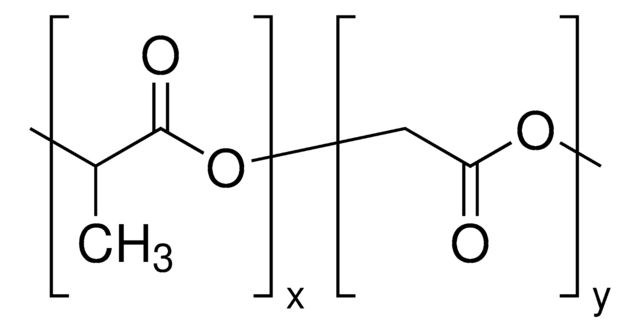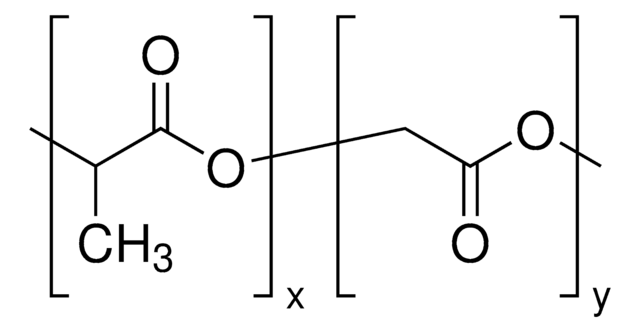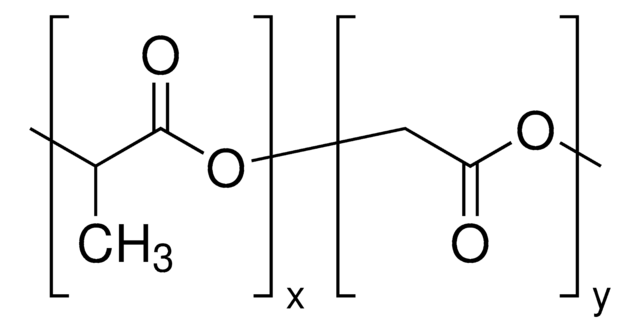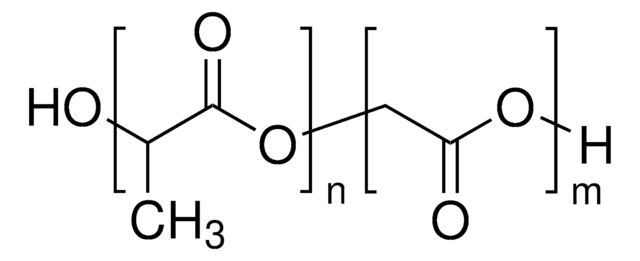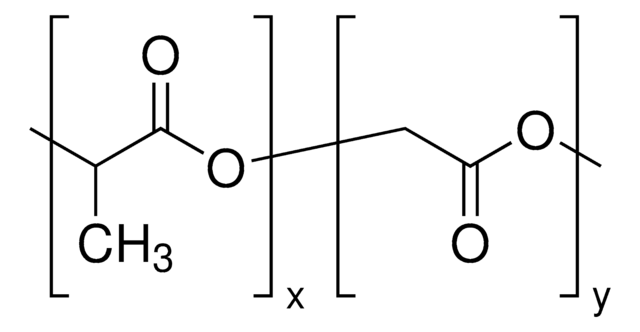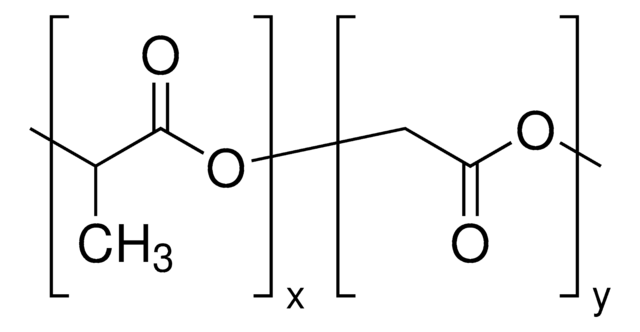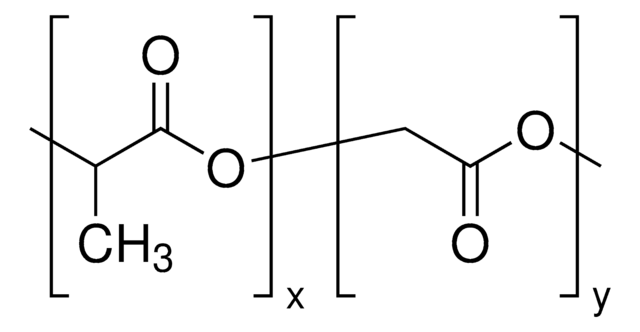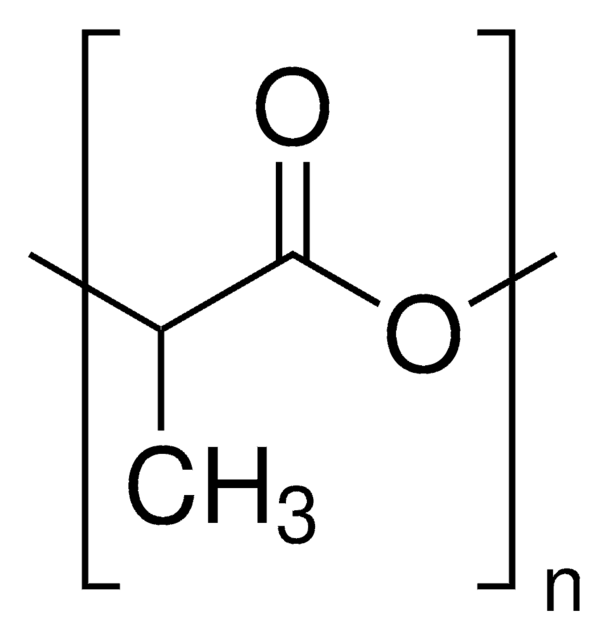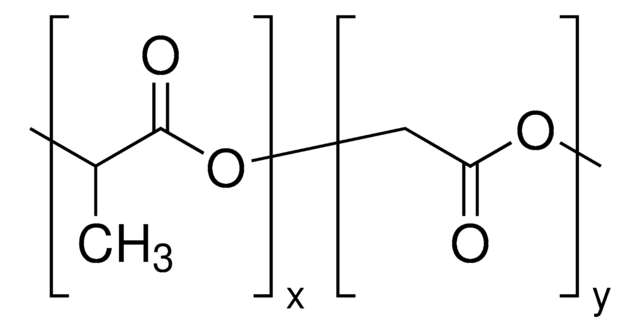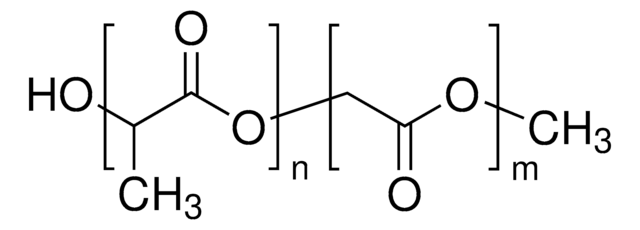Kluczowe dokumenty
719900
Resomer® RG 504 H, Poly(D,L-lactide-co-glycolide)
acid terminated, lactide:glycolide 50:50, Mw 38,000-54,000
Synonim(y):
PLGA
About This Item
Polecane produkty
Poziom jakości
Formularz
amorphous
proporcje
lactide:glycolide 50:50
masa cząsteczkowa
Mw 38,000-54,000
ramy czasowe degradacji
<3 months
lepkość
0.45-0.60 dL/g, 0.1 % (w/v) in chloroform(25 °C, Ubbelohde) (size 0c glass capillary viscometer)
temp. przejścia
Tg 46-50 °C
temp. przechowywania
2-8°C
ciąg SMILES
O2C(C(=O)OC(C2=O)C)C.O1CC(=O)OCC1=O
InChI
1S/C6H8O4.C4H4O4/c1-3-5(7)10-4(2)6(8)9-3;5-3-1-7-4(6)2-8-3/h3-4H,1-2H3;1-2H2
Klucz InChI
LCSKNASZPVZHEG-UHFFFAOYSA-N
Powiązane kategorie
Zastosowanie
It can be used to preparepolymer nanospheres for encapsulating CuO, to form stimuli-responsivemultifunctional nanocarriers.
Informacje prawne
produkt powiązany
Kod klasy składowania
11 - Combustible Solids
Klasa zagrożenia wodnego (WGK)
WGK 3
Temperatura zapłonu (°F)
Not applicable
Temperatura zapłonu (°C)
Not applicable
Wybierz jedną z najnowszych wersji:
Masz już ten produkt?
Dokumenty związane z niedawno zakupionymi produktami zostały zamieszczone w Bibliotece dokumentów.
Klienci oglądali również te produkty
Produkty
Interest in utilizing biodegradable polymers for biomedical applications has grown since the 1960s.
Syntetyczne poliestry alifatyczne dominują wśród biomateriałów resorbowalnych w zastosowaniach klinicznych.
The world of commercial biomaterials has stagnated over the past 30 years as few materials have successfully transitioned from the bench to clinical use. Synthetic aliphatic polyesters have continued to dominate the field of resorbable biomaterials due to their long history and track record of approval with the U.S. Food and Drug Administration (FDA).
Aliphatic polyesters such as polylactide, poly(lactide-co-glycolide) and polycaprolactone, as well as their copolymers, represent a diverse family of synthetic biodegradable polymers that have been widely explored for medical uses and are commercially available.
Global Trade Item Number
| SKU | GTIN |
|---|---|
| 719900-1G | 4061832855462 |
| 719900-5G | 4061835515592 |
Nasz zespół naukowców ma doświadczenie we wszystkich obszarach badań, w tym w naukach przyrodniczych, materiałoznawstwie, syntezie chemicznej, chromatografii, analityce i wielu innych dziedzinach.
Skontaktuj się z zespołem ds. pomocy technicznej
